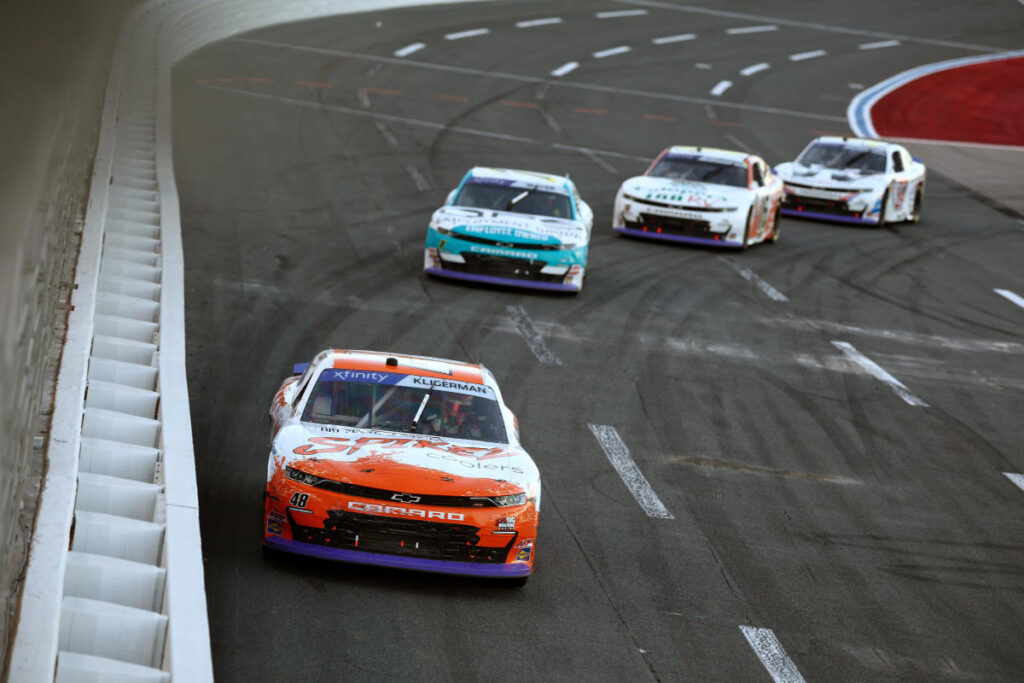On Saturday during the Xfinity Series race at the Charlotte Roval, NASCAR race control subjected Parker Kligerman to an agonizing scenario that altered the course of the race and likely his career. Leading comfortably on the penultimate lap, Kligerman faced an unexpected development when Leland Honeyman suffered a tire failure, causing his vehicle to skid and get lodged beneath a tire barrier. As the situation unfolded, the anticipation of a caution flag became evident, yet NASCAR officials hesitated for an inexplicable period, delaying the necessary caution that could have potentially secured Kligerman’s victory.
As Kligerman crossed the start/finish line to begin his final lap, the caution lights were finally activated; however, this timing brought a detrimental turn of events. Because the caution did not come out until Kligerman had technically started the last lap, the race extended into a two-lap restart that set the stage for an unexpected outcome. This delay in issuing the caution ultimately allowed Sam Mayer to snatch the lead from Kligerman early in the restart, resulting in Kligerman finishing in sixth place. The implications of this finish were severe as Mayer’s victory propelled him into the next round of the playoffs, while Kligerman was eliminated from contention.
The reason behind NASCAR’s prolonged wait to issue the caution remained unclear, causing frustration among fans and analysts alike. NASCAR officials suggested that visibility issues at the crash site complicated their decision-making process. However, this explanation seemed inadequate, especially considering a substantial delay transpired even after Honeyman’s predicament became apparent to viewers at home. The concern extended beyond timing; fans were left questioning the integrity of race officiating when there was a noticeable gap between what viewers saw and the caution call.
Moreover, the situation raised broader concerns regarding race manipulation and the unpredictability of NASCAR officiating. The timing of the caution flag, especially so painfully close to Kligerman’s white-flag lap, caused an uproar among commentators who deemed it an unfair advantage to other competitors. Many felt that the hesitation by NASCAR to address the caution not only influenced the race’s outcome but also cast a shadow on Kligerman’s aspirations as he approaches the conclusion of his full-time racing career.
Kligerman’s dissatisfaction was further amplified by the fact that the incident marked a significant moment in his racing journey, as he contemplates leaving the Xfinity Series after this season. With over 115 career starts and a notable top-ten finish last season, the implications of the Charlotte Roval race may sting even more for Kligerman due to the fiercely competitive landscape, where opportunities for wins can be rare. The notion that this race might have been his greatest chance at winning now leaves him reflecting on a truly bitter twist of fate.
Ultimately, the events of Saturday at the Roval resonate with the complexities and challenges faced by drivers and officials in NASCAR. Kligerman, who has also gained recognition as a broadcaster for NBC, is left facing an uncertain future as he concludes this chapter in his racing career. While races are often decided on the track, moments like this remind fans and competitors alike of the influence of race control and the sometimes unpredictable nature of officiating in motorsport. Kligerman’s experience serves as a poignant reminder of the emotional and professional high stakes involved in competitive racing.

